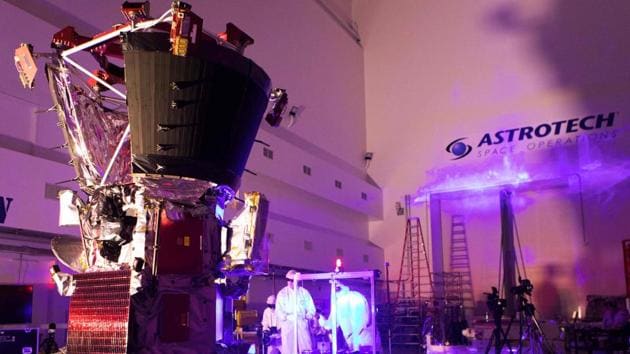Nasa to launch $1.5 billion spacecraft to ‘touch’ the sun
The unmanned probe, over five decades in the making, will last nearly seven years and pass through the Sun’s corona 24 times.
Nasa is preparing to launch a $1.5 billion spacecraft designed to “touch” the sun on August 11, which will help scientists learn more about the scorching atmosphere of our favourite star, known as the corona.

The Parker Solar Probe, named after the 91-year-old pioneering solar astrophysicist Eugene Parker, will come within 6.16 million km of the sun in the next few years, the closest a spacecraft has ever gotten to the Sun. This is the first time Nasa has named a mission after a living individual.
The unmanned probe, over five decades in the making, will last nearly seven years and pass through the corona 24 times. With each orbit it will push closer and closer to the sun, ultimately circling the star at a distance of less than 10 radii.
It will then cross paths with Venus and fly within the orbit of Mercury, seven times closer to the sun than any other probe.
This means the probe will be in the sun’s atmosphere, a place where conditions can get pretty hot and harsh. The Sun-facing side of the probe will endure temperatures of about 1,370 degrees Celsius. The spacecraft is protected by a heat shield that will keep it close to room temperature, about 29 degrees Celsius.
Speeding by at a pace of 430,000 miles per hour will make it “the fastest human-made object,” said project scientist Nicky Fox of the Johns Hopkins University Applied Physics Lab.
‘Strange, unfamiliar environment’
One of the reasons scientists are sending the probe is to learn about the Sun’s atmosphere and the weird property it exhibits - the heat from the star gets more intense further away from its surface. Parker also described the problem of the heating of the corona.
The US space agency calls this mismatch “the coronal heating problem,” and hopes the Parker Solar Probe will solve the mystery of why the corona reaches temperatures of up to 10 million degrees Fahrenheit.
Fox said scientists have already studied the corona “every way imaginable,” and a closer look is now needed.
“We need to get into this action region, where all of these mysteries are actually occurring.”
Understanding how the corona works will help scientists anticipate dangerous space weather storms, which can disrupt the power grid on Earth.
“It’s of fundamental importance for us to be able to predict space weather much the way we predict weather on Earth,” explained Alex Young, a solar scientist at NASA.
The other great mystery is the behaviour of “solar wind’, a term coined by Parker for a stream of charged particles emitted by the sun to release energy.
A key question that the probe seeks to answer is how solar wind is accelerated, and for the first time, it will be able to look for answers at the source itself.
The probe is protected by a 4.5-inch-thick (11.43-centimeter) carbon-composite shield, built to withstand 500 times the Sun’s radiation on Earth. A series of instruments on board the spacecraft will measure the magnetic and electric fields, plasma waves and high energy particles.
There is also a white light imager, taking pictures of what the spacecraft is about to “plough through,” said Fox.
“The goal is to have the instruments on all the time but the prime science gathering for us is about 11 days,” she told reporters ahead of the launch.
A 45-minute launch window opens on Saturday at 3:48am local time (1:18pm IST).
The car-sized probe is already packed on to the Delta IV-Heavy rocket at Cape Canaveral Air Force Station in Florida.
(With agency inputs)






